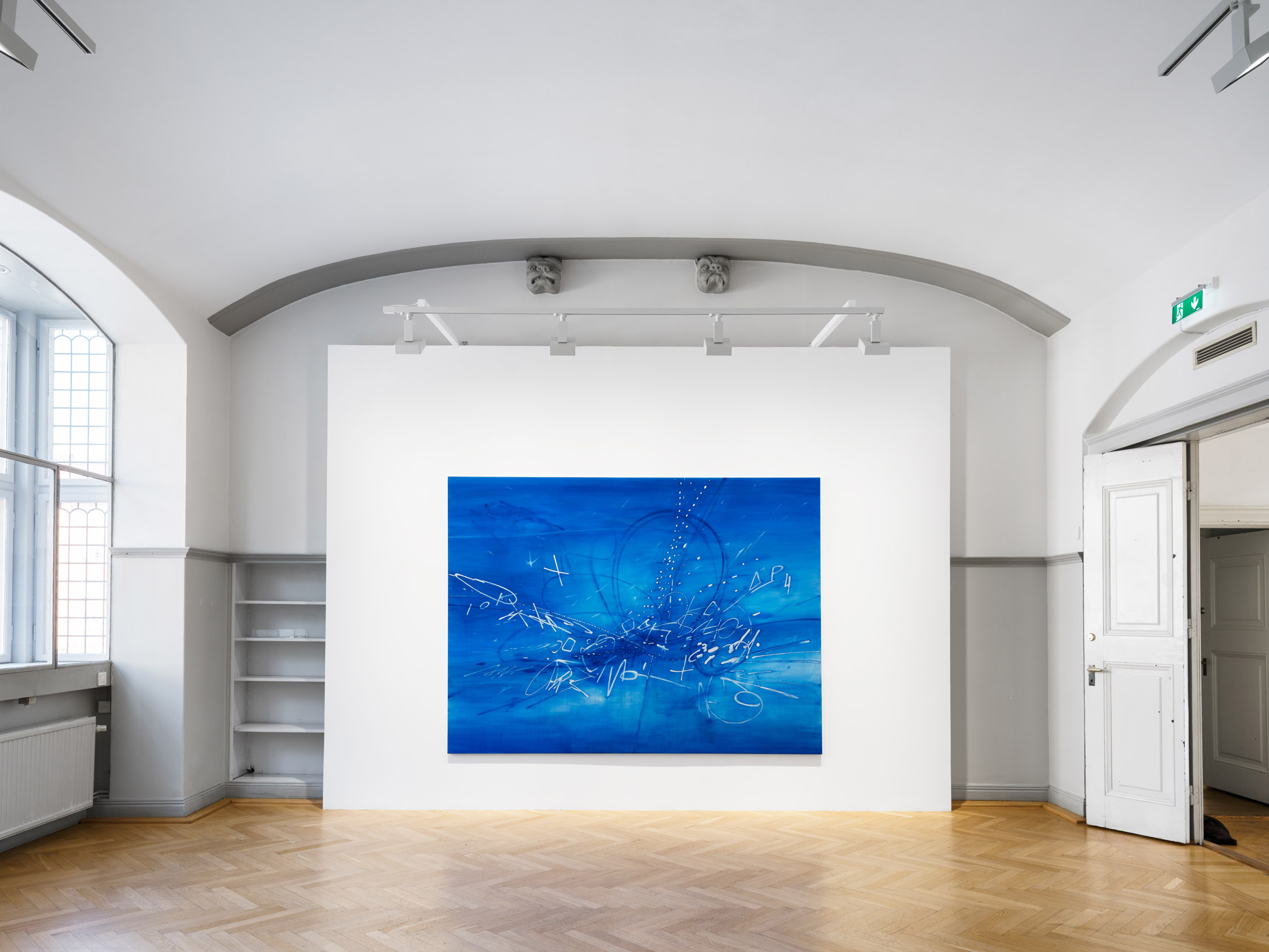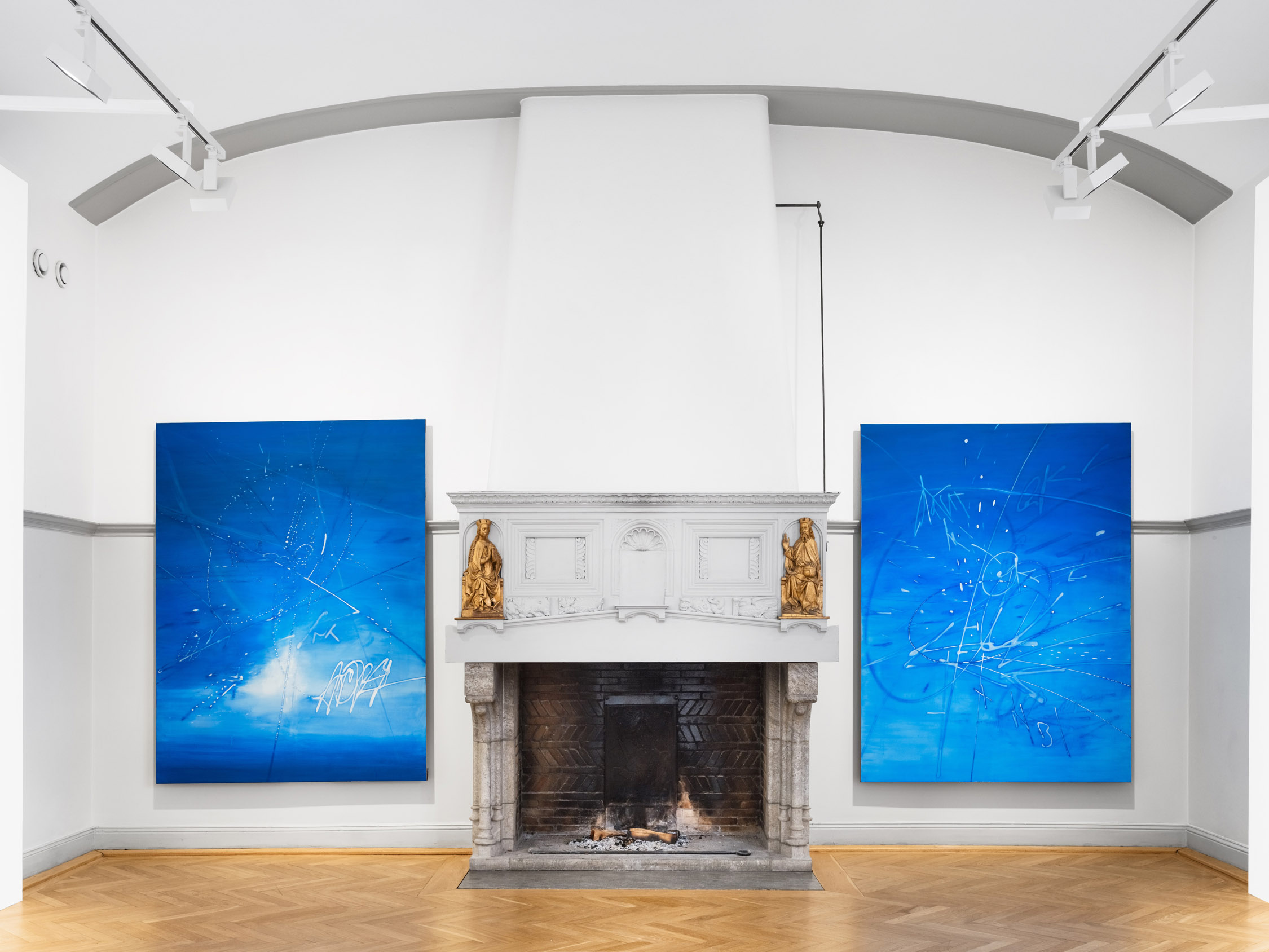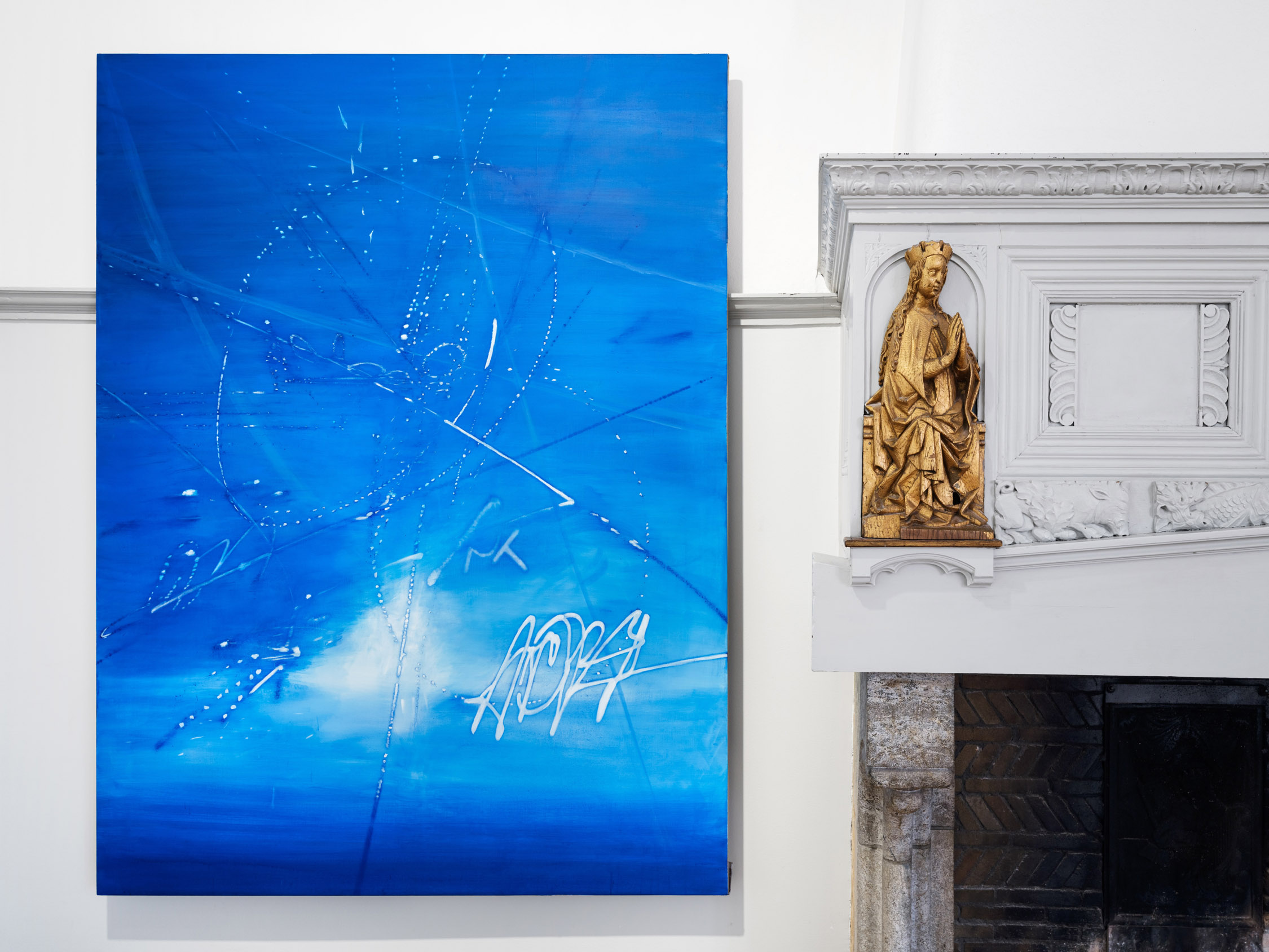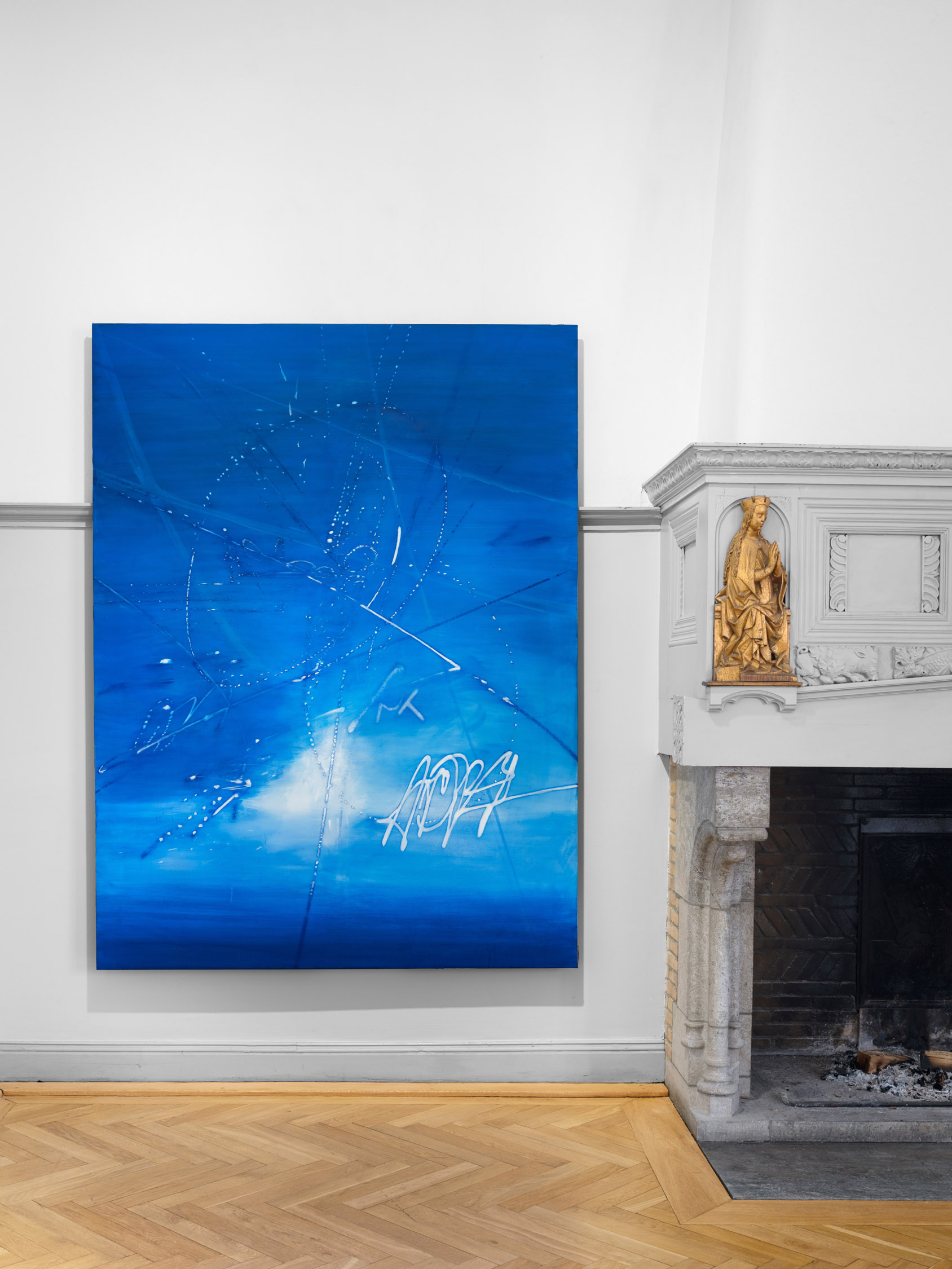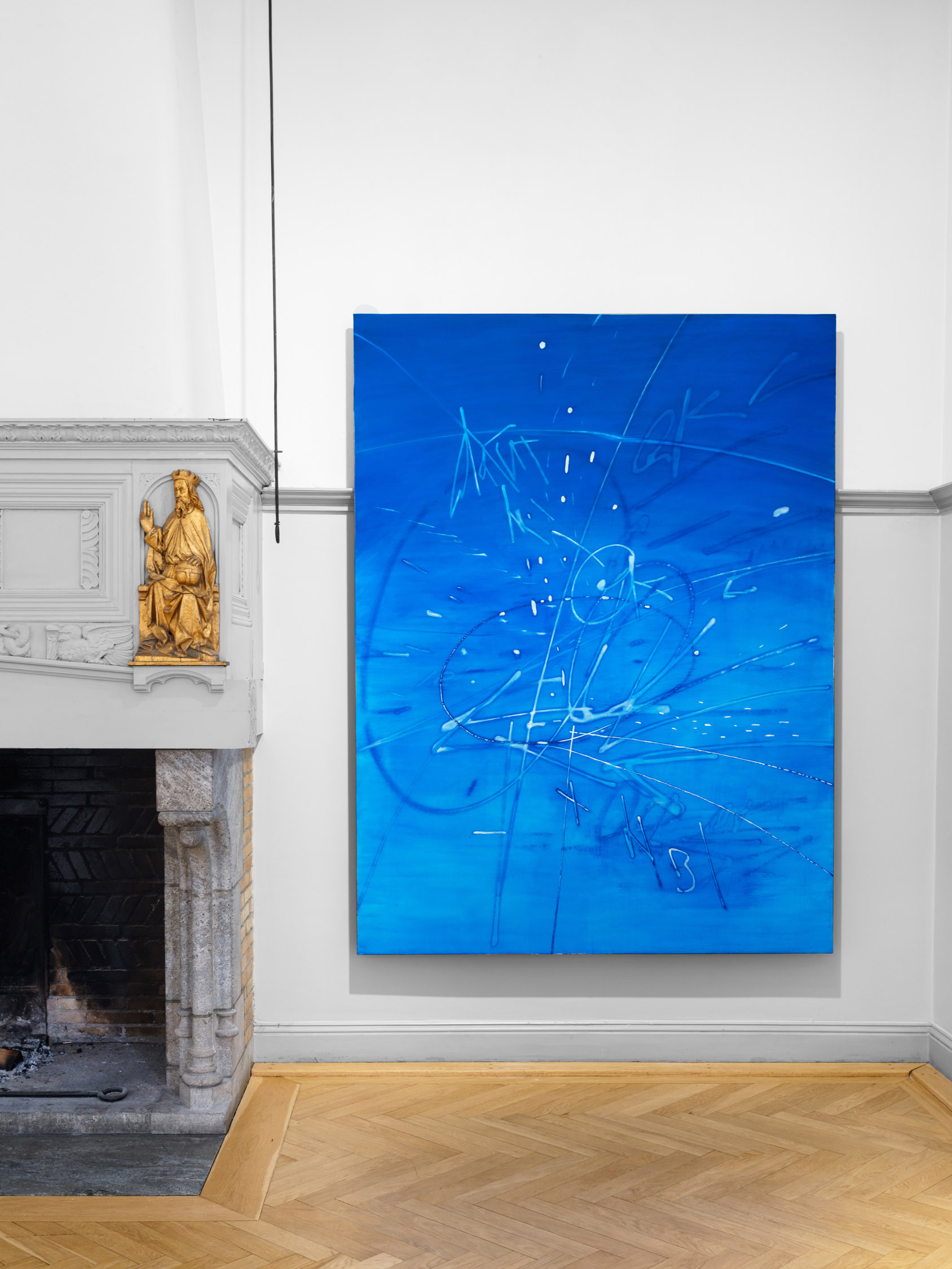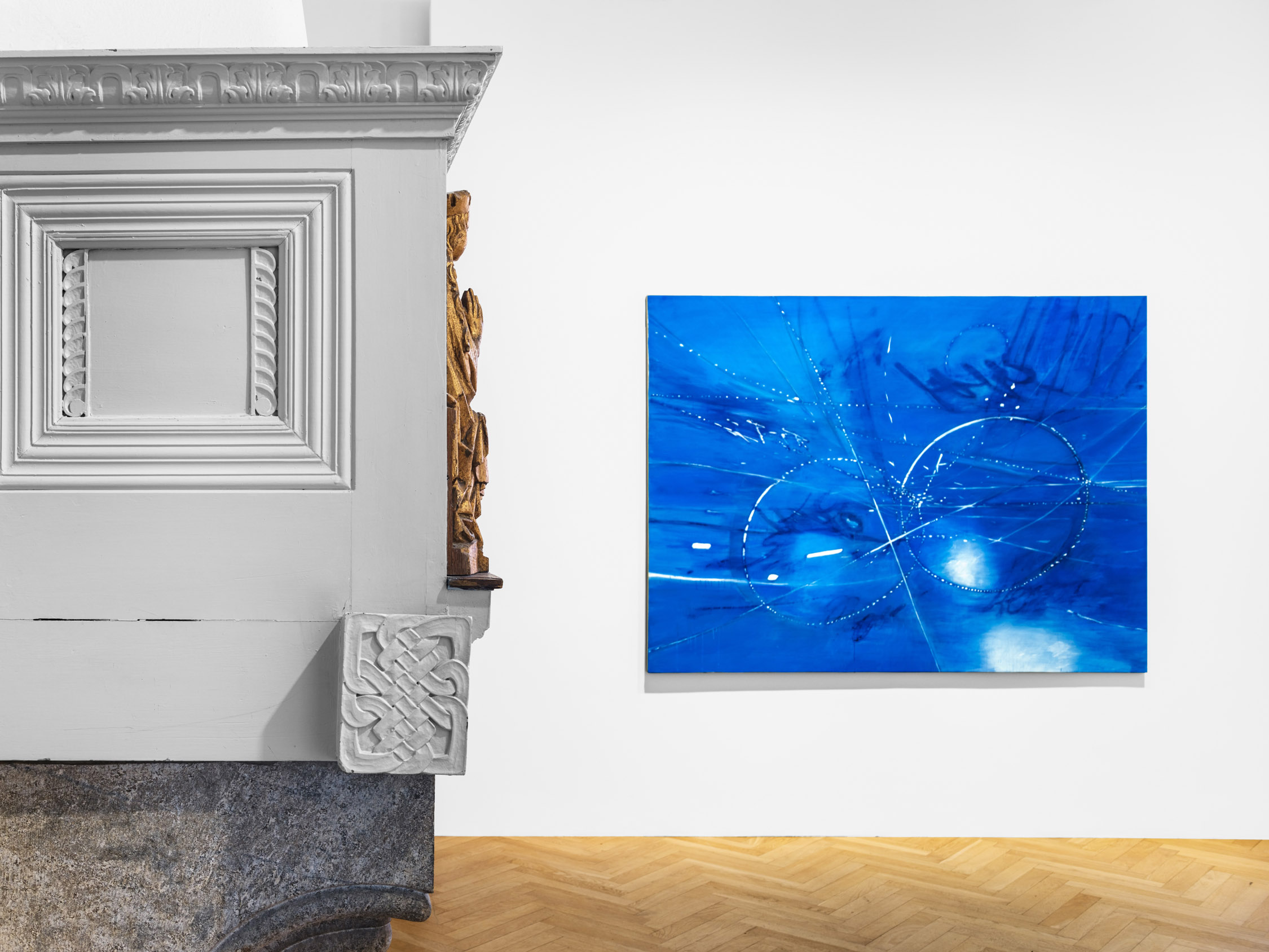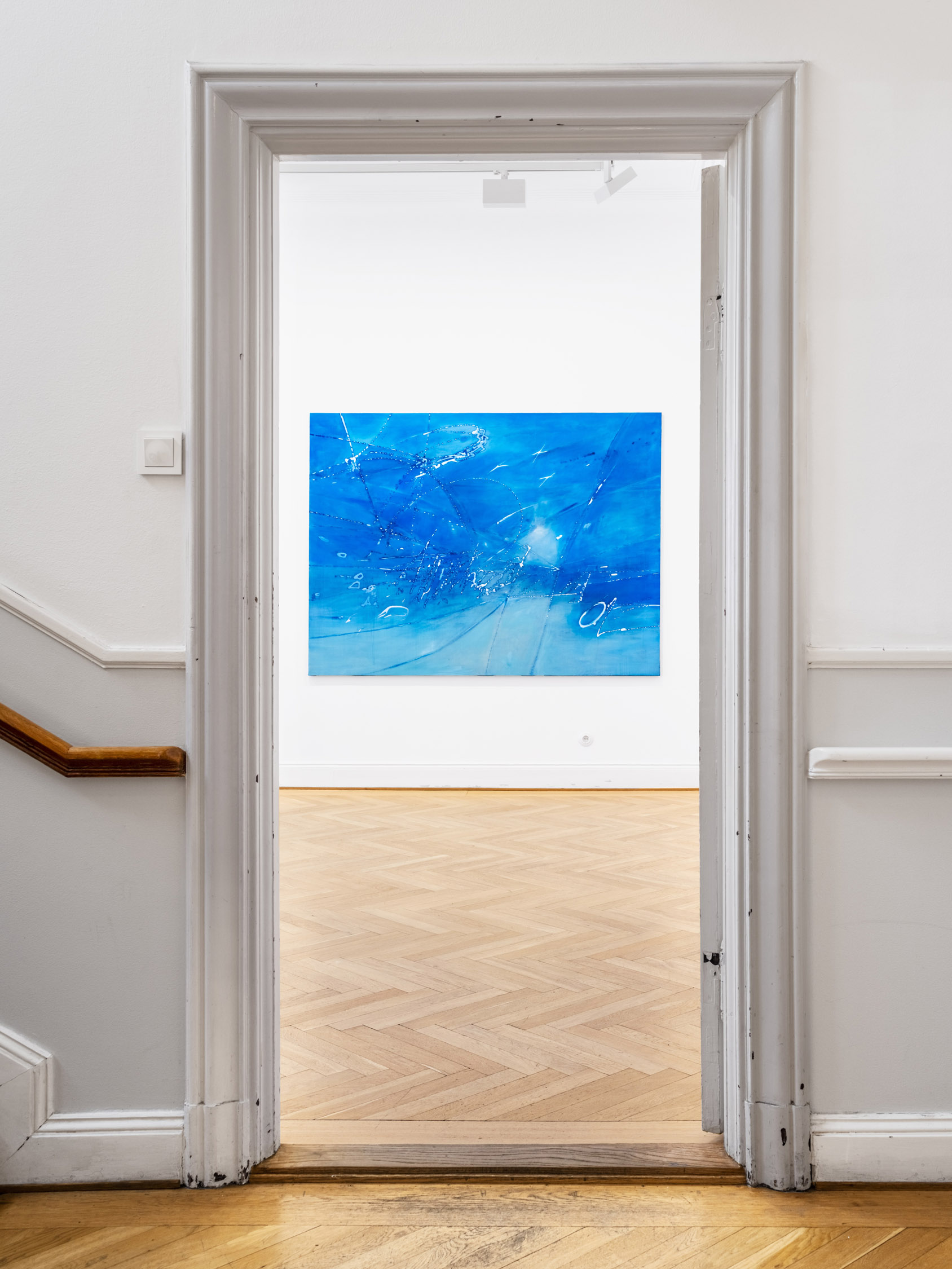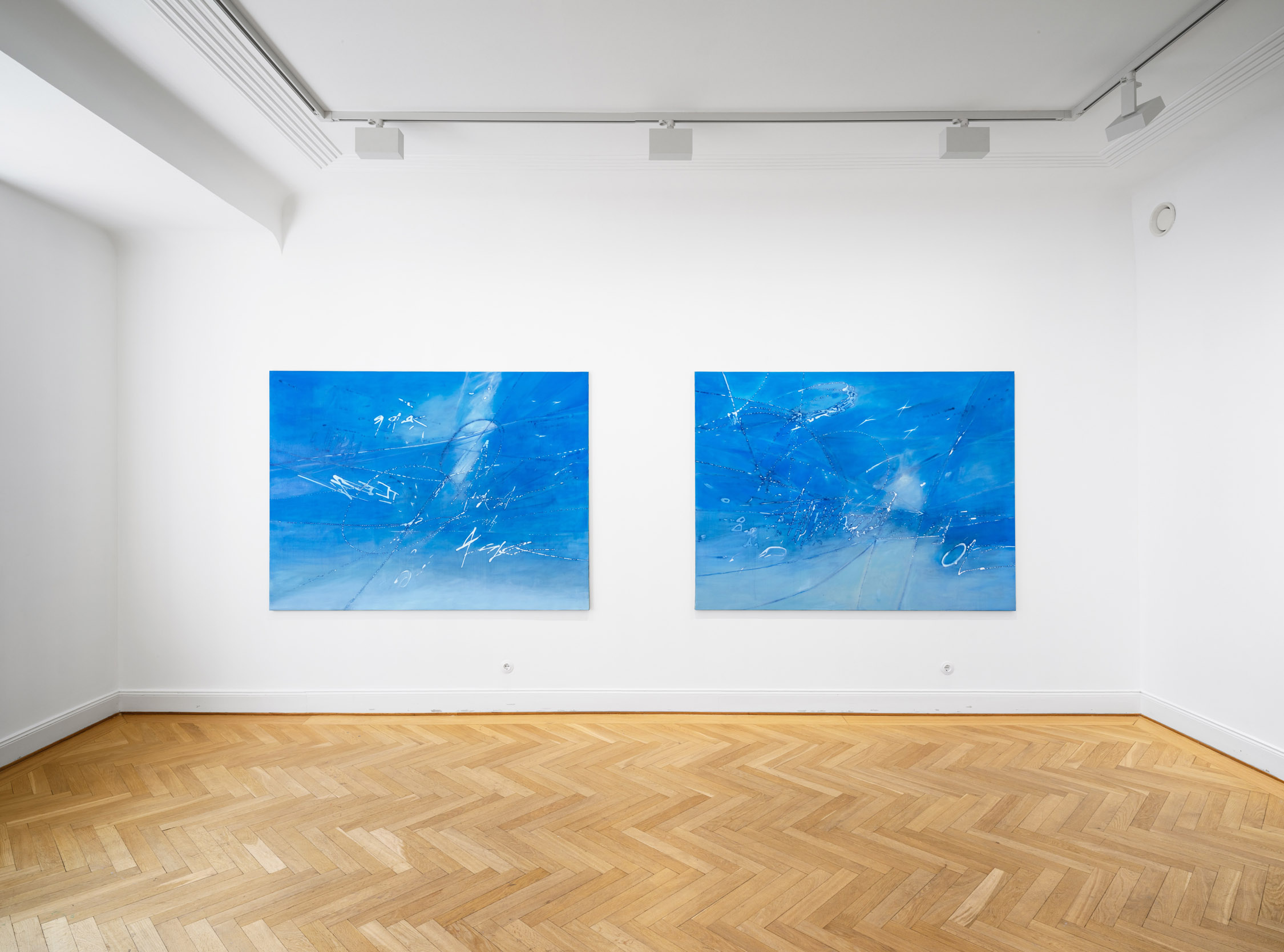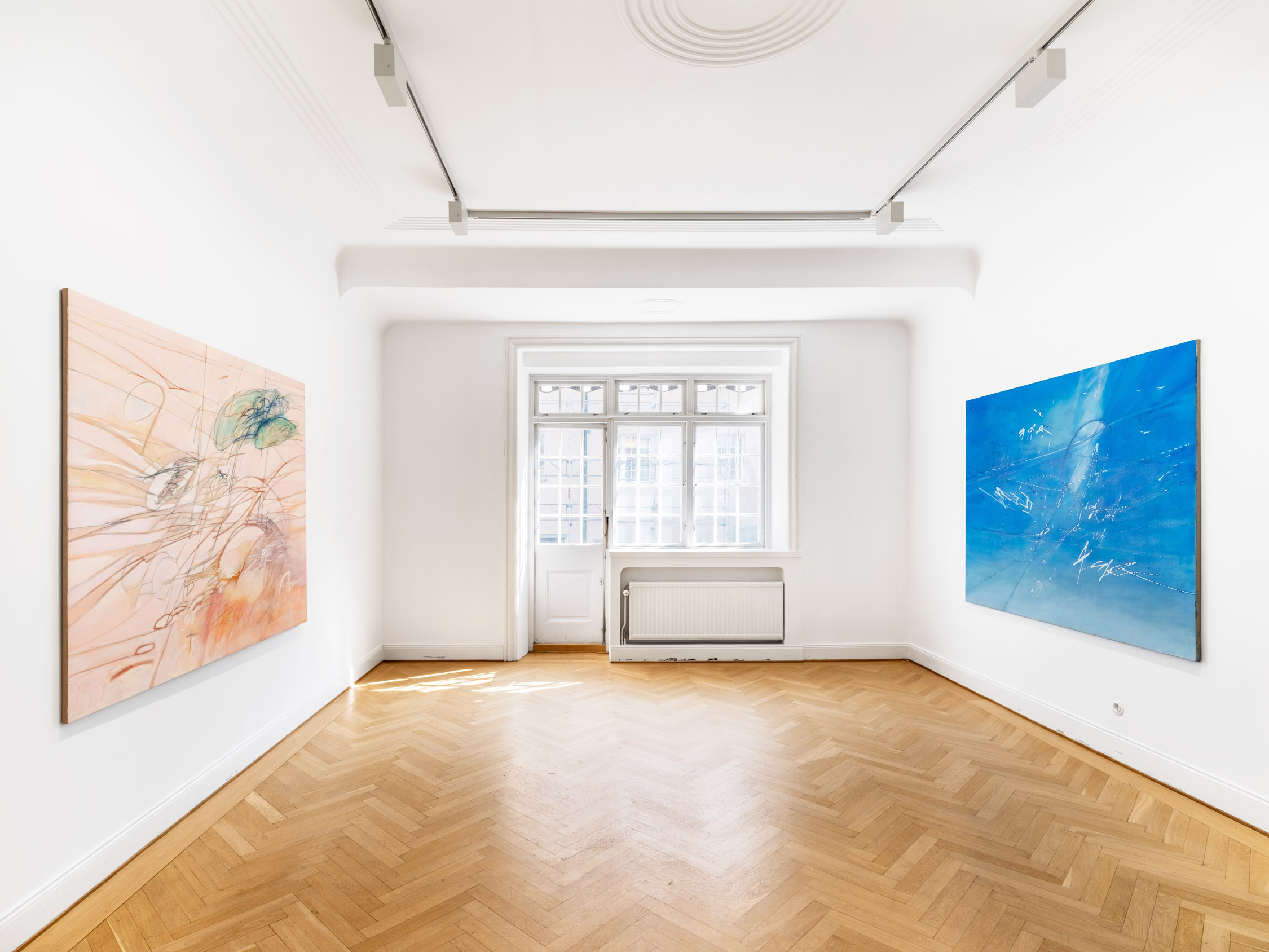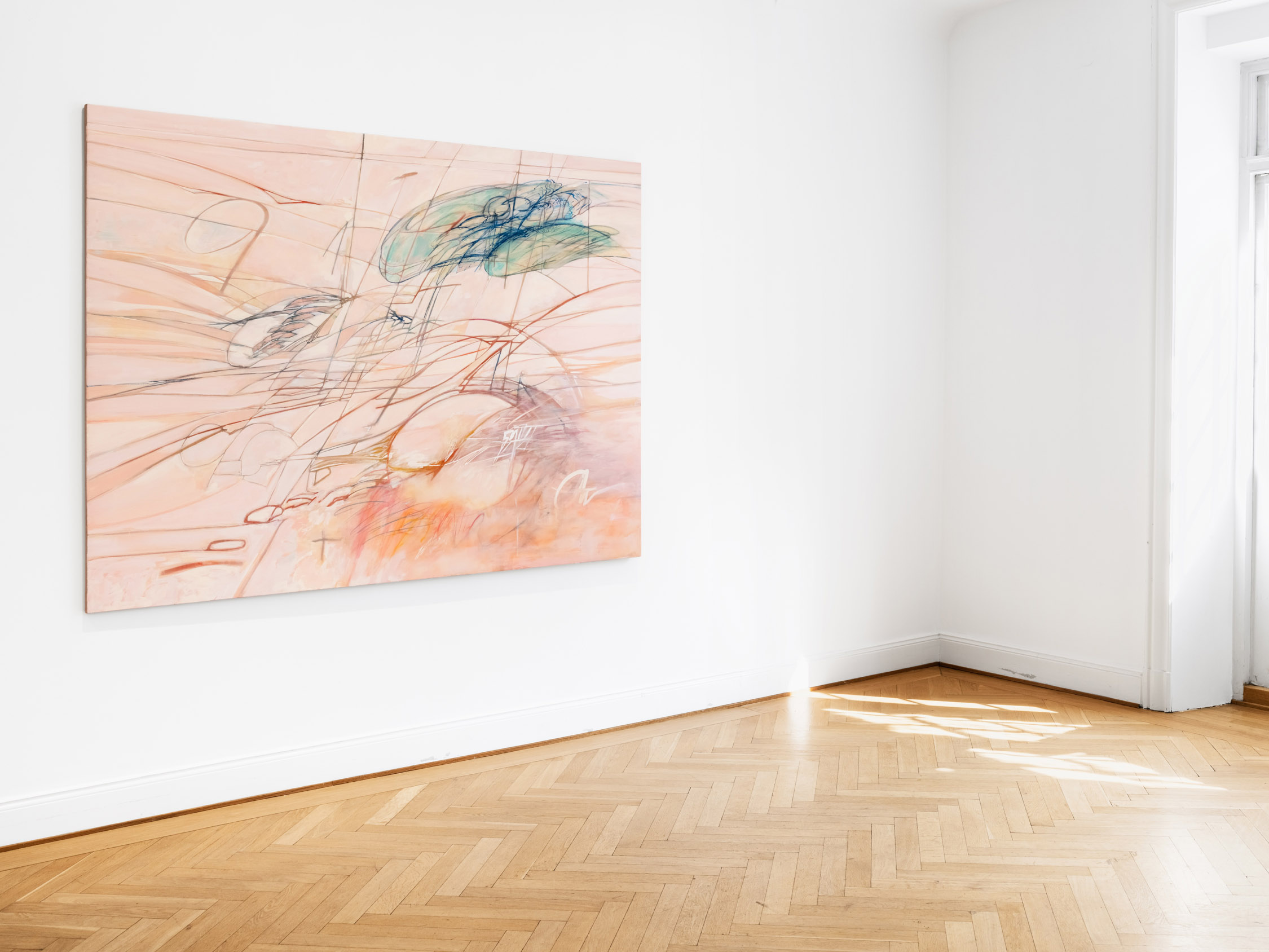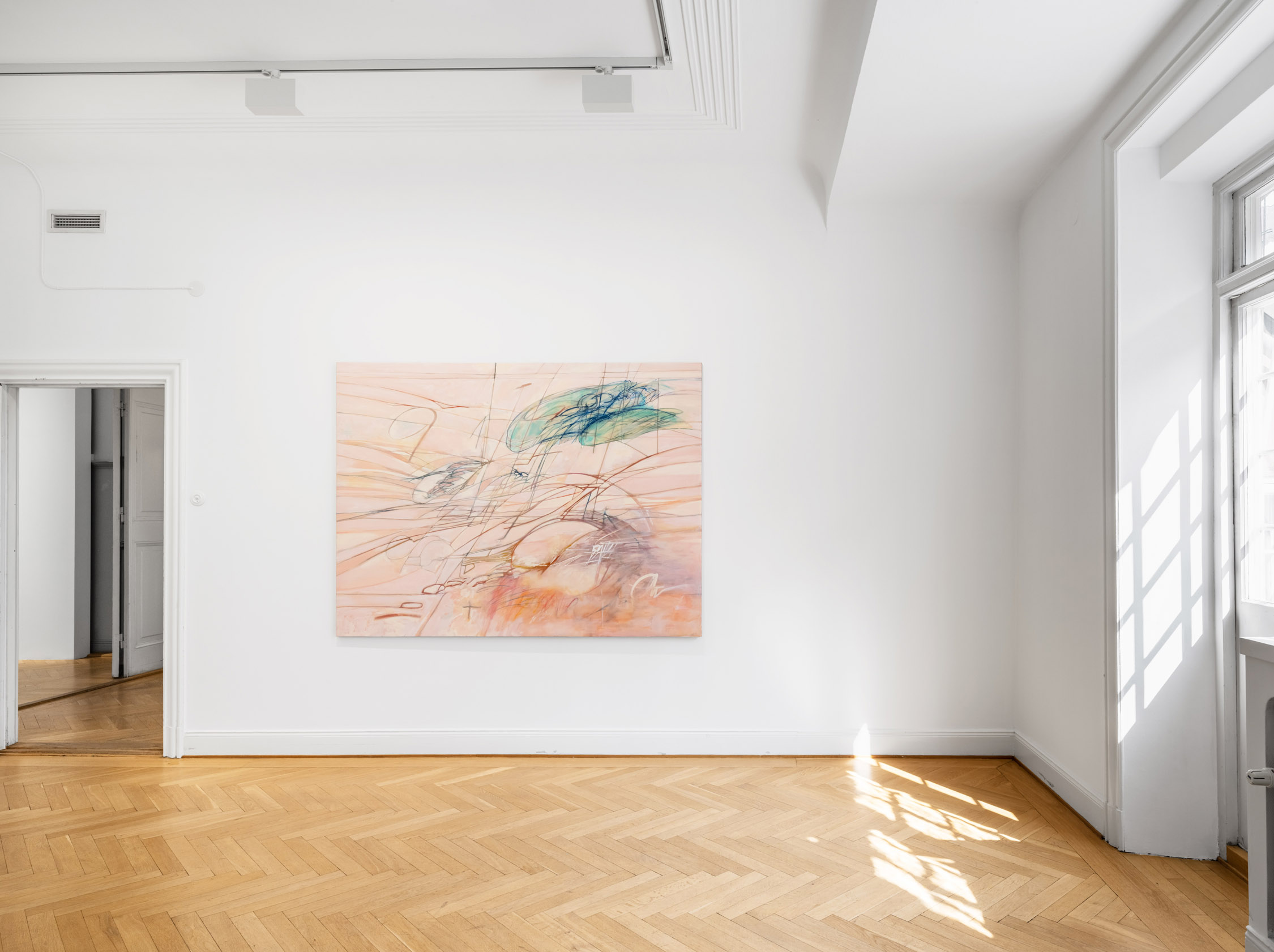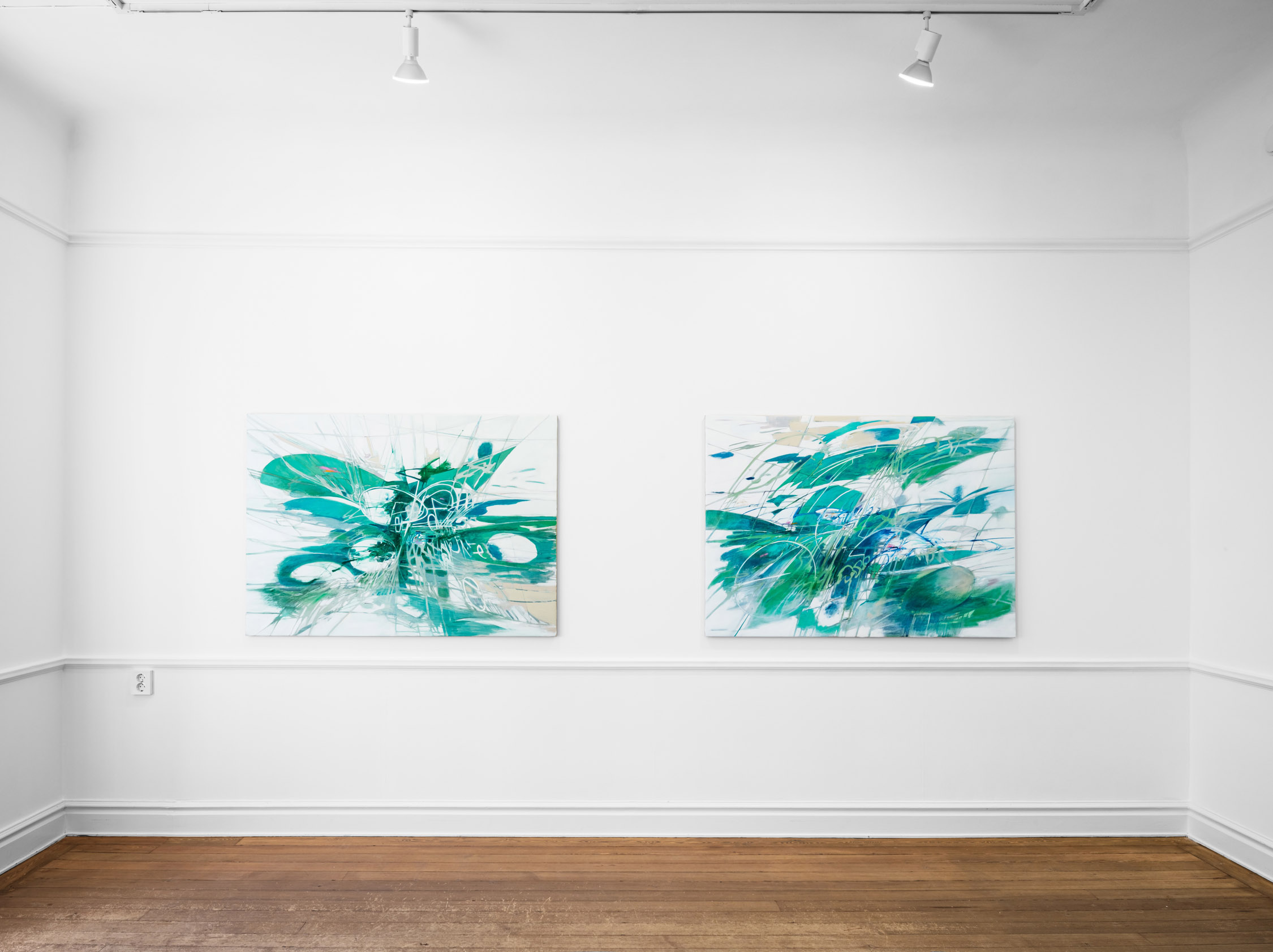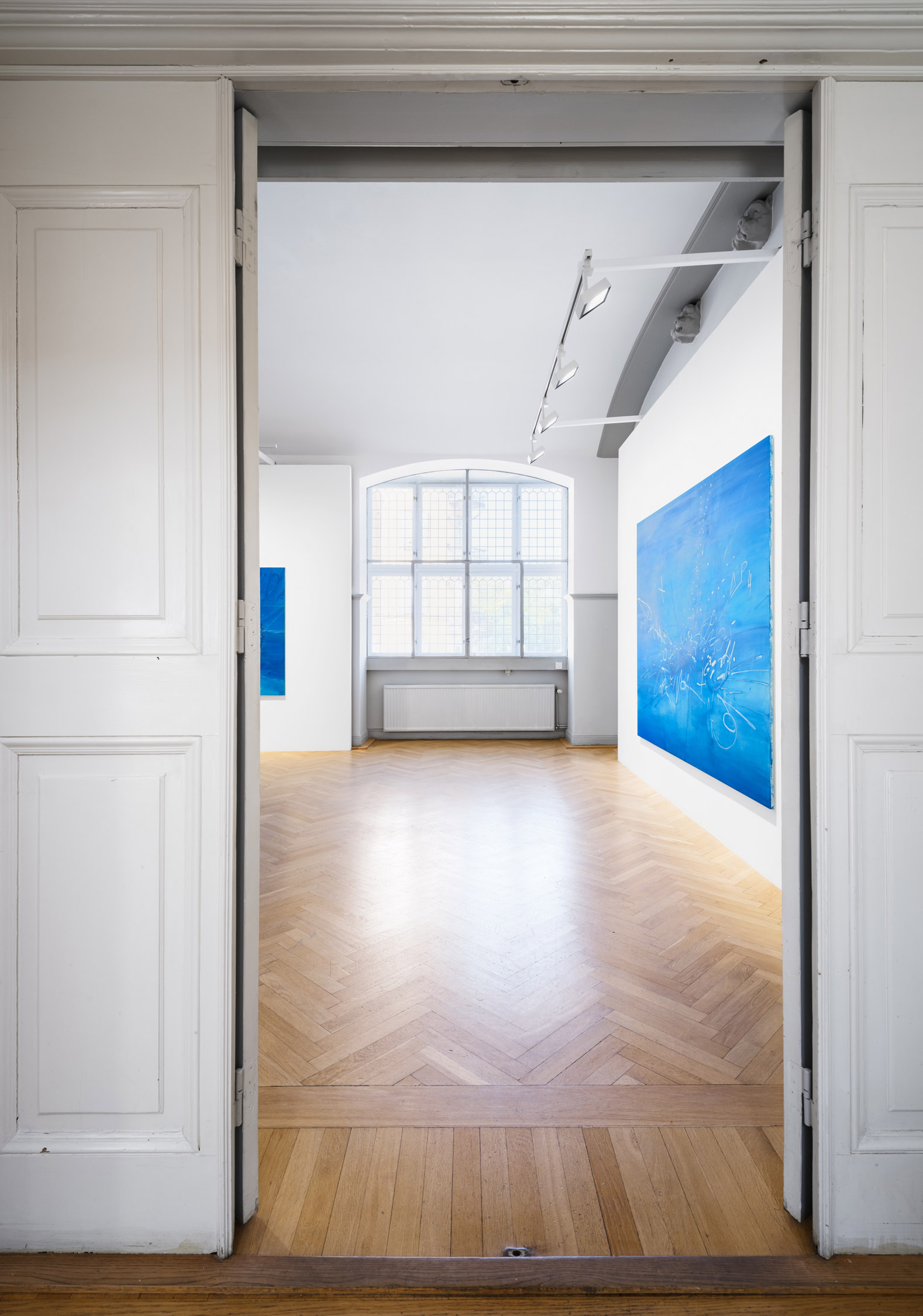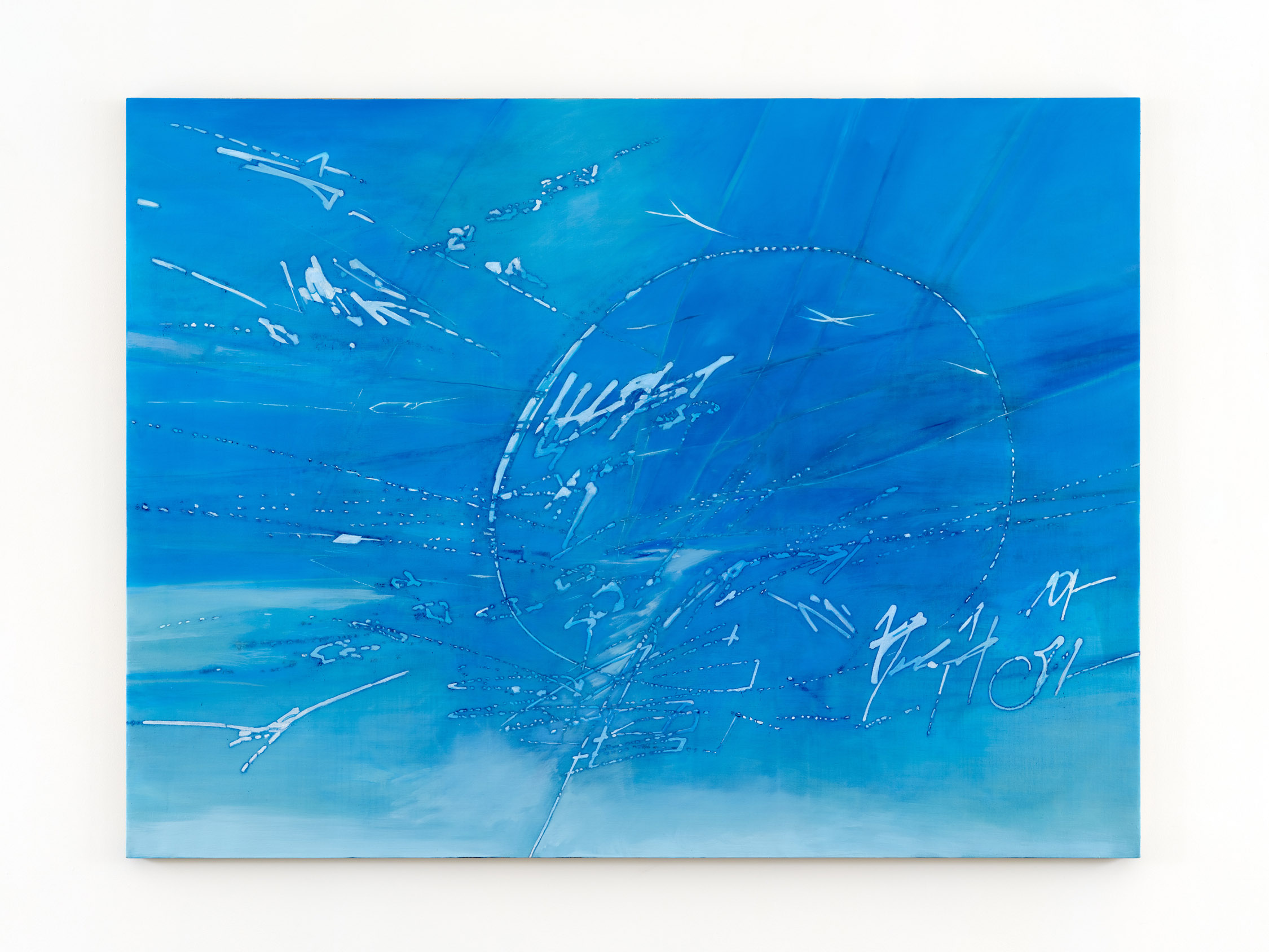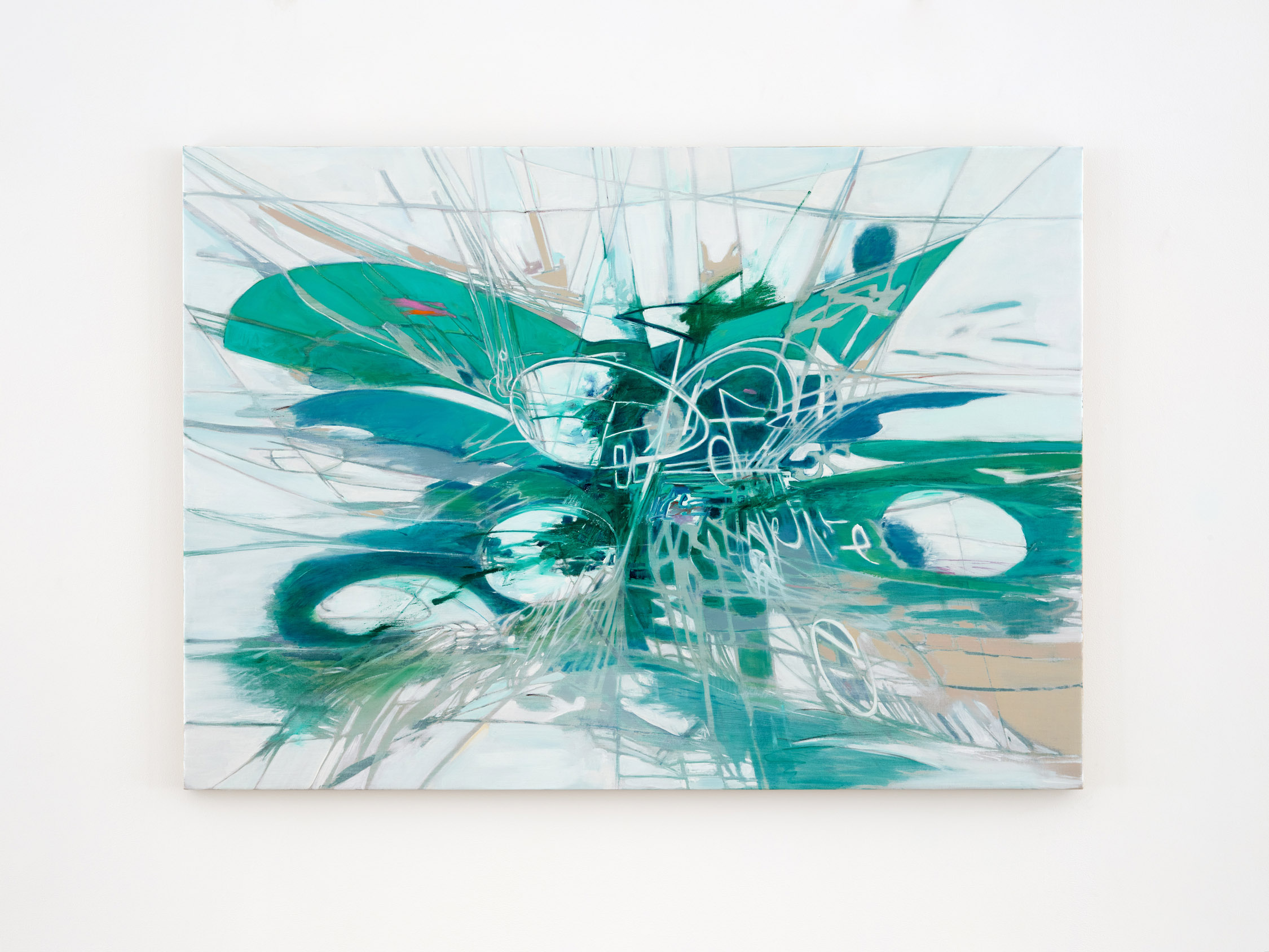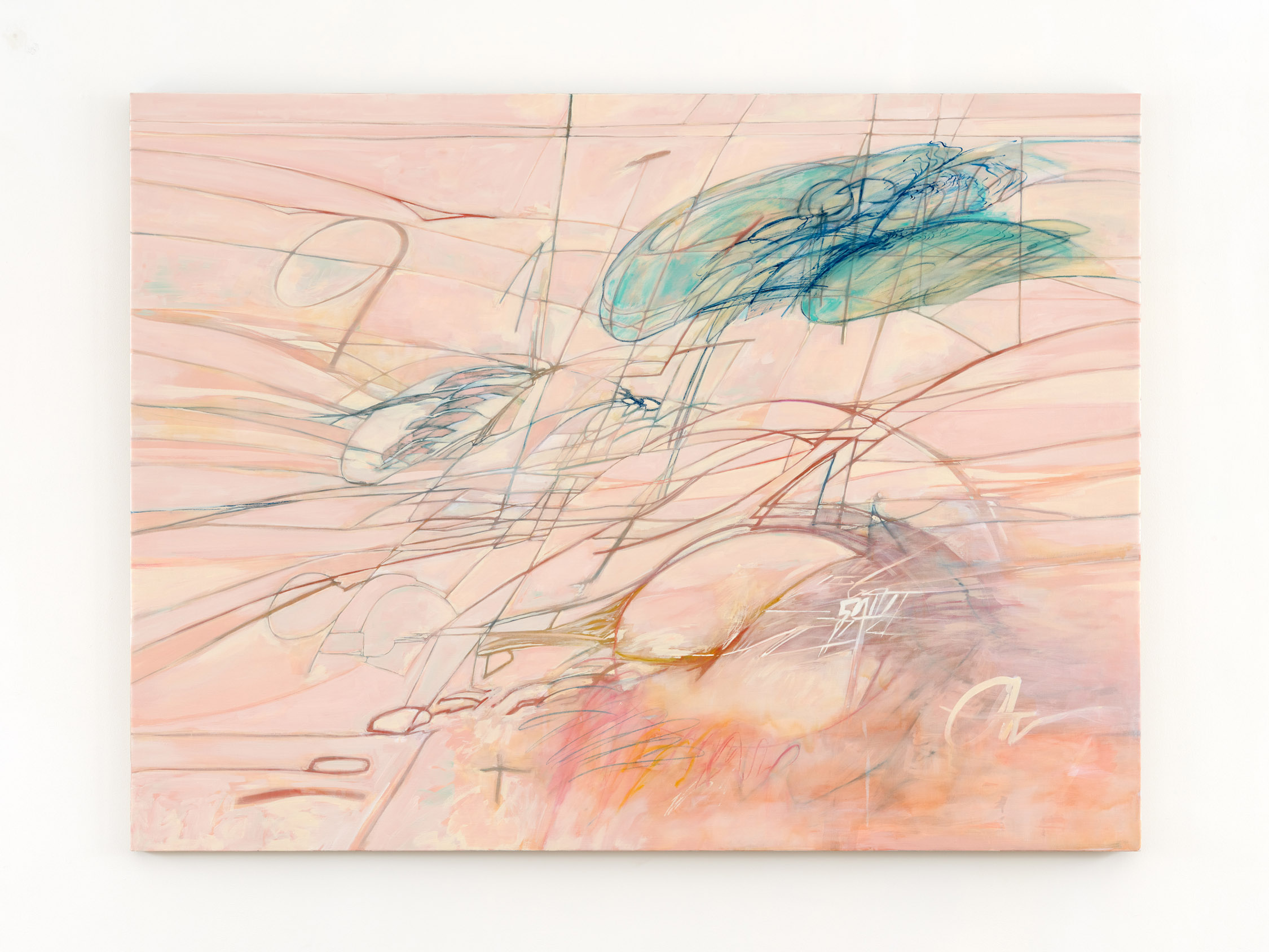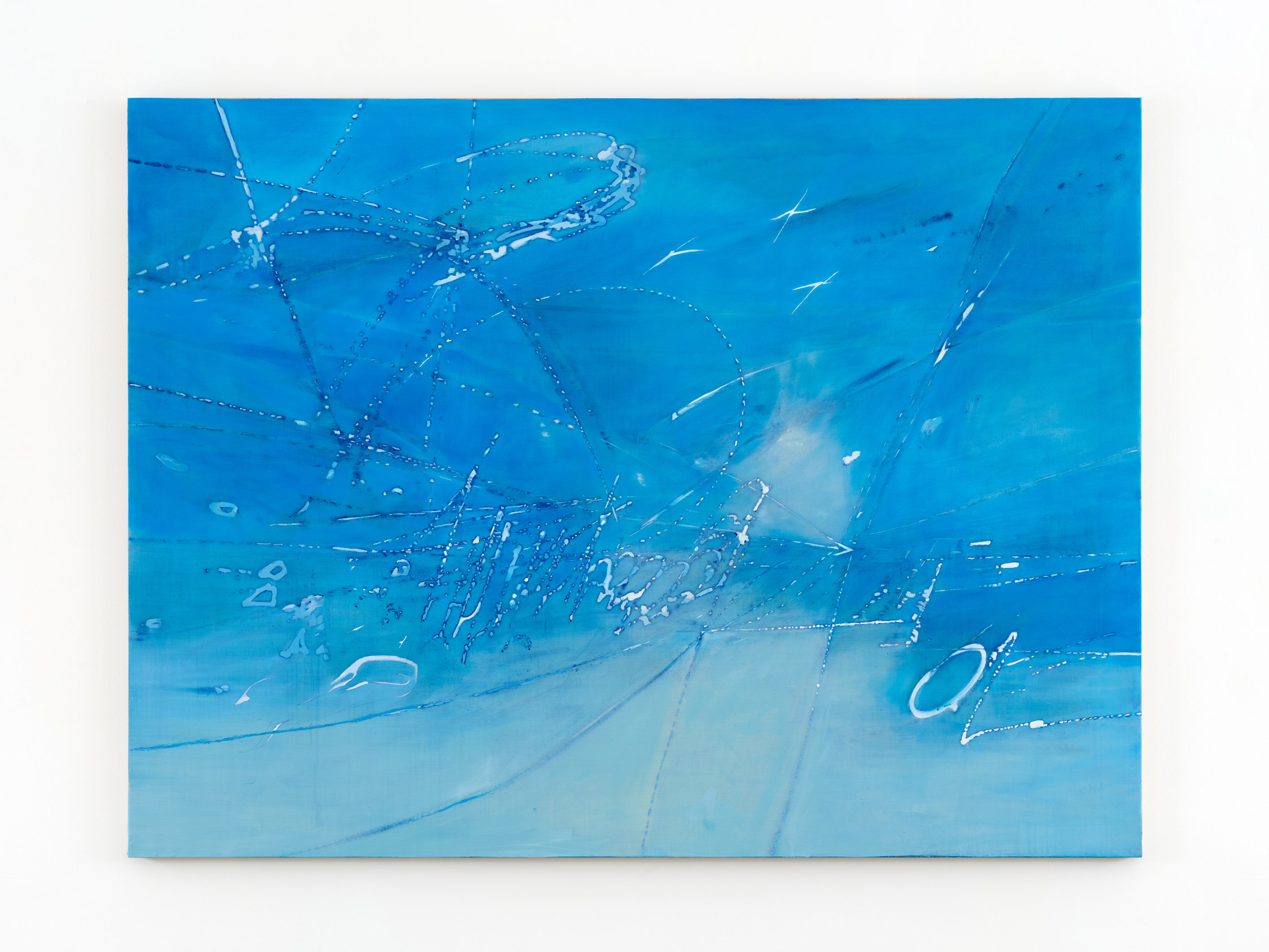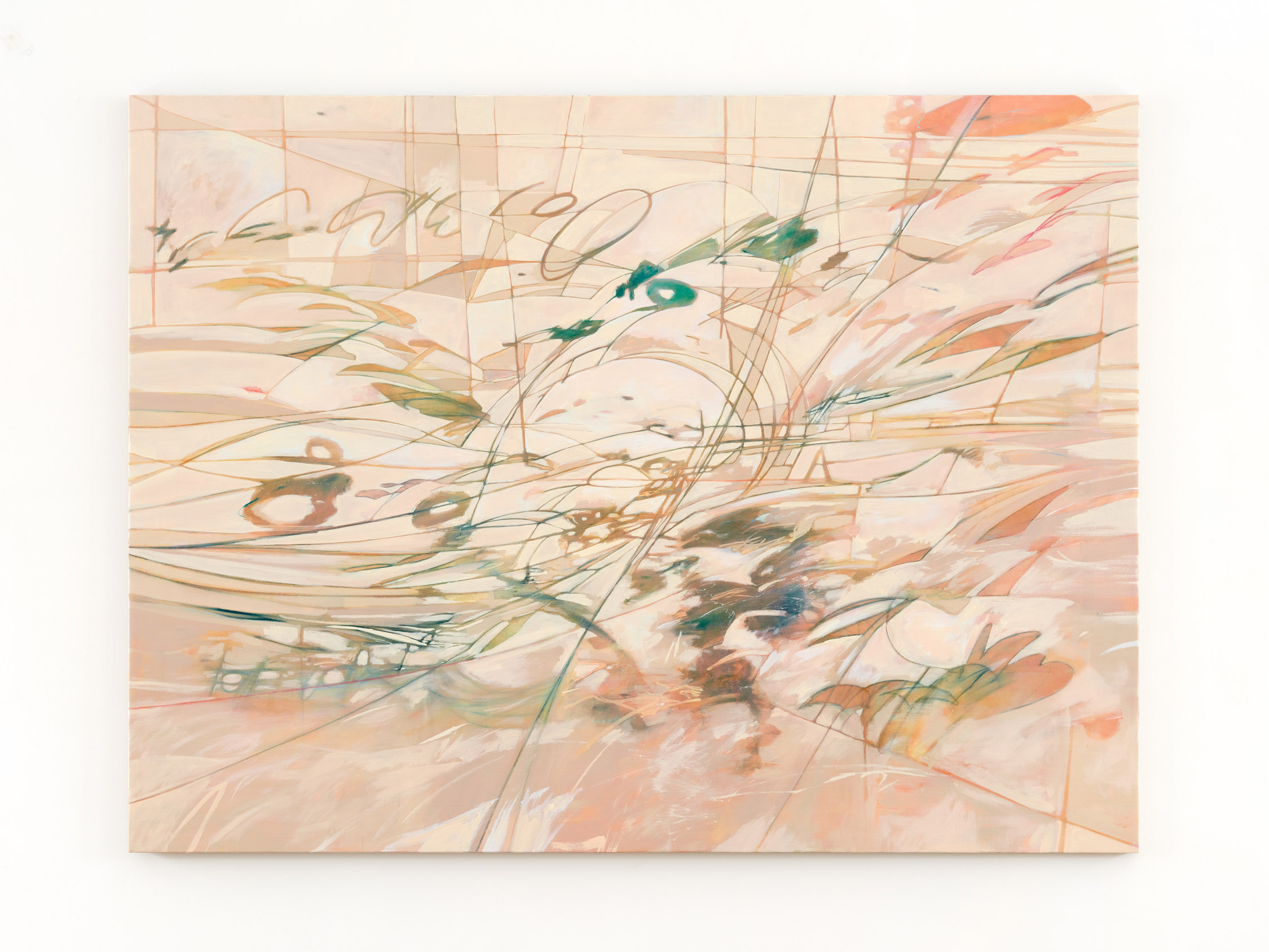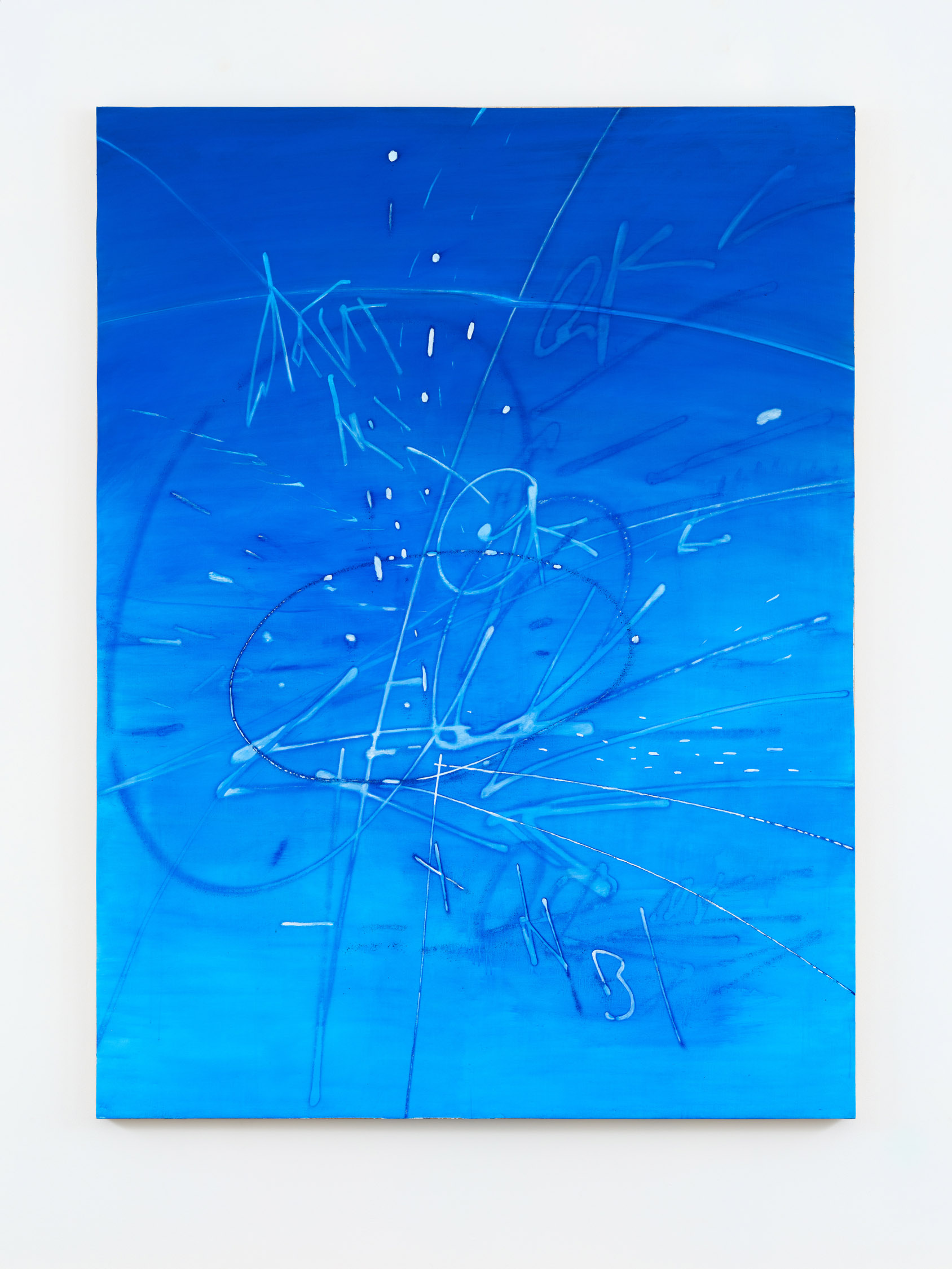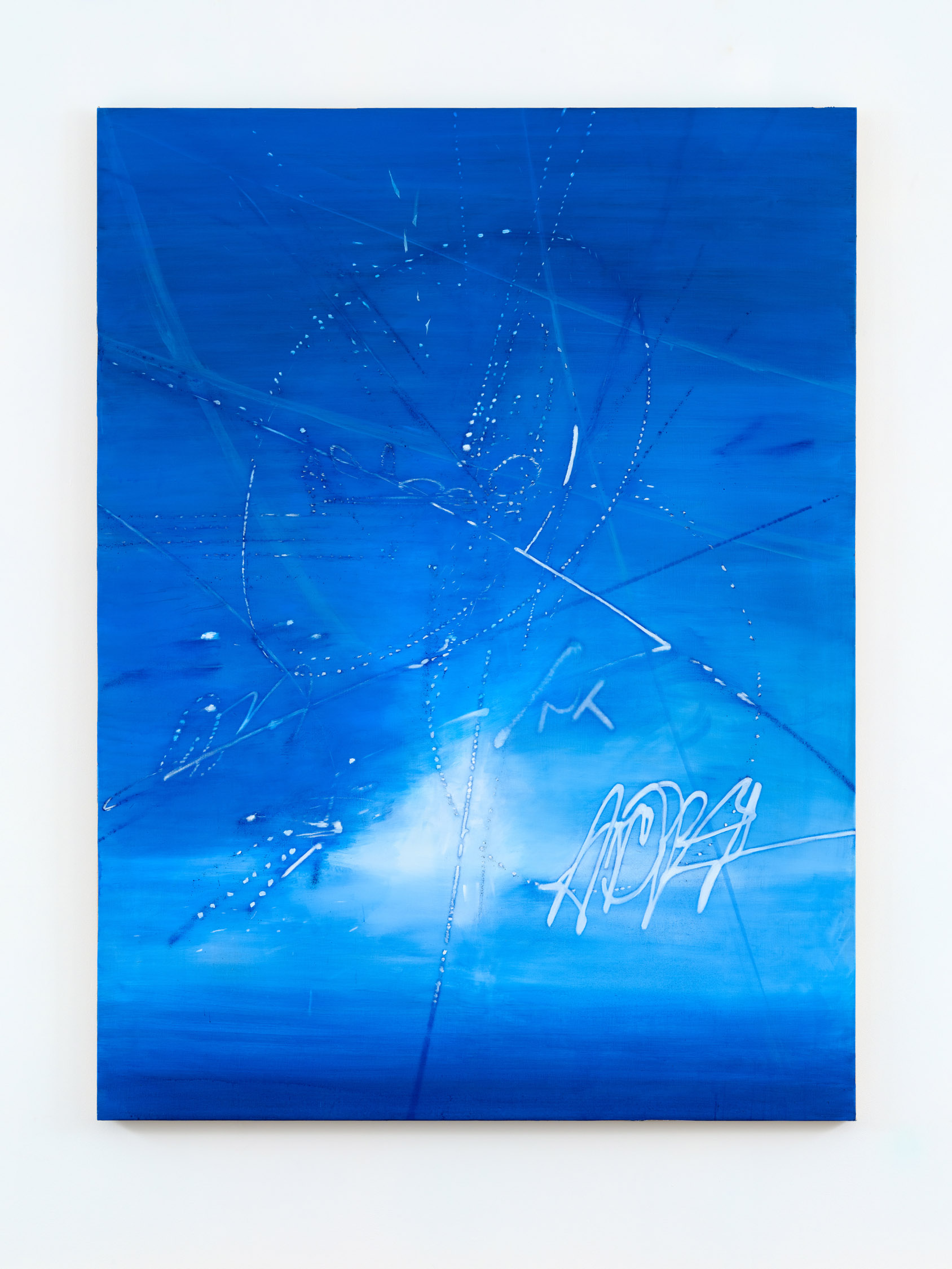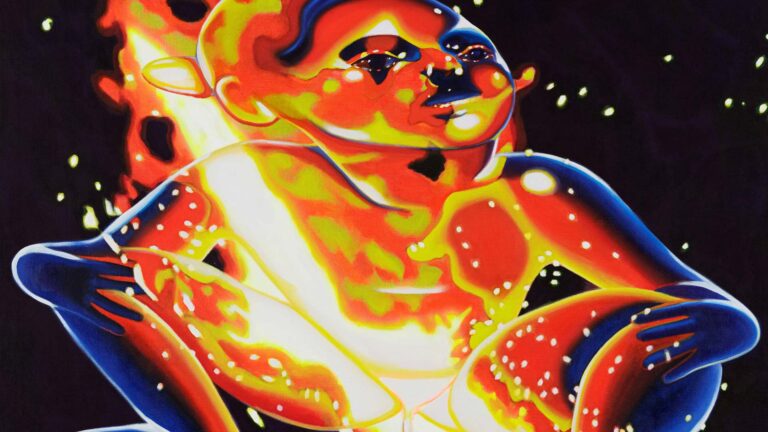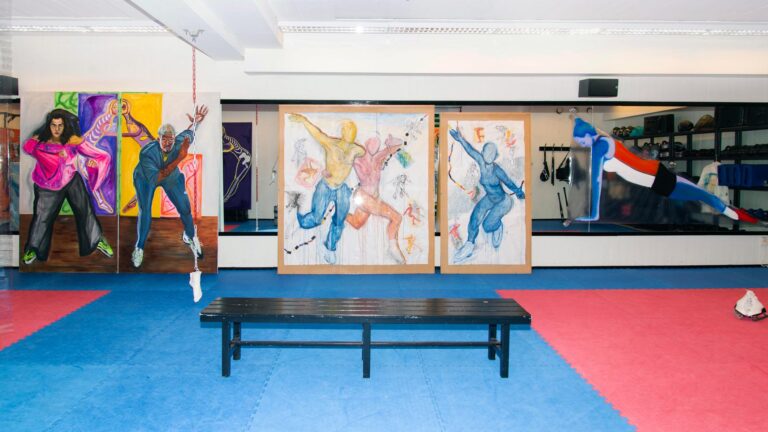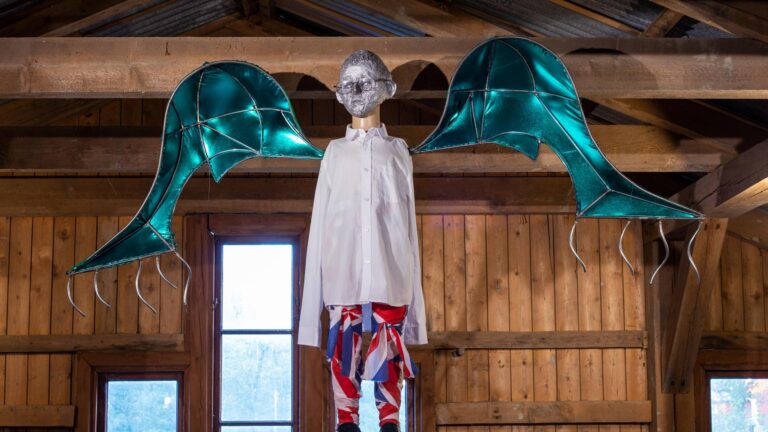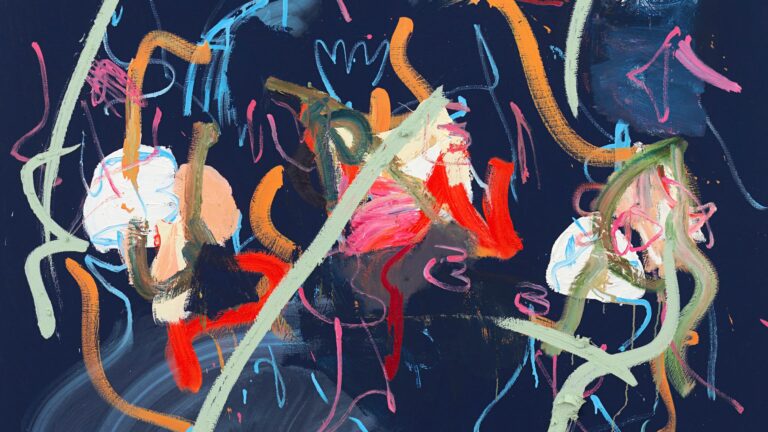LOYAL is thrilled to present Tidepools, Jim Thorell’s fourth solo exhibition with the gallery. Tidepools unveils a new body of blue-centric work. The tide pool, a diverse ecosystem at the juncture of ocean and rocky shore, eternally fills and drains with the rhythm of the tides. The organisms within, from barnacles to starfish, must adapt to withstand the fluctuating conditions. Like its namesake, the exhibition Tidepools, inspires adaptation to the varied conditions time brings. Tidepools as the gateway to bigger waters ahead.
Thorell’s process follows lines, allowing the subconscious to find its way through painted tracks and swishes. His interest in the graphical, two dimensional representation of physical, biological and metaphysical processes, show both microscopic and major Tectonic shifts and forces.
These lines are gestural marks evoking language and traversing both natural systems and those within global networks. In the artist’s words, “I’d like to paint an image that represents the neural experience, as if I was playing an instrument that I was accustomed to very intuitively. I want it to be musical without it attempting to look like music. I want it to be direct without the image being brash or impulsive.” Throughout his career, Thorells’s show titles—Mykorrhiza, Vinden, and Tidepools— have addressed processes of natural and cultural shifts, probing varieties of line associations from root system tendrils to the ethereal currents of the wind with an intersection into gestural-like lines springing from the hip—an embodied pause.
Now, Thorell turning to watery lines—ripples, waves, drops—creates layers of three-dimensional blue depths. These lines, suspended in an almost digital seeming space, create latitudes and longitudes stretched across the canvas—a prismatic glow of infinite time plotted in space. Sputtering droplets track lines, evoking trailing jellyfish tentacles in the depths of the ocean or long threads of a spider’s web catching small movements in the wind. These droplets create individual bodies, the beginning of worlds.
Some say that in the beginning, before the tidepool, before the very world as we know it came into being, raging waters covered everything and all was total darkness. A spirit, light itself, drifted in this primordial soup sparking life1. Others say life was brought here from elsewhere in the universe via fallen comets or cosmic dust2. Mapping movement, Thorell’s paintings unveil geometric worlds like undiscovered planets traveling through the solar system. Tidepools acts as a vehicle for extended travel into deep time and our individual and collective im/mortaility. Complex, asymmetric, organic and yet surprisingly aerodynamic.
JIM THORELL (born 1981, Stockholm, Sweden) lives and works in Stockholm.
Thorell received his MFA from Valand Academy in Gothenburg in 2010, and studied at the Academy of Fine Arts, Vienna with Professor Daniel Richter in 2009, Kanazawa University, Japan in 2007 and the Vietnam University of Fine Arts in Hanoi in 2007. Solo exhibitions include Loyal (Stockholm), Setareh (Düsseldorf), Gillmeier Rech (Berlin), Pina (Vienna), Roman Road (London), Union Pacific (London), Carl Kostyál (Stockholm). Group exhibitions include Alma Lövs Museum (Östra Ämtervik), Bohusläns Museum (Uddevalla), Deitch Projects (New York), Moderna Museet (Malmö), Tensta Konsthall (Stockholm), Vestfossen kunstlaboratorium (Vestfossen), Wanås Konst (Knislinge). Collections include Magasin 3 and Ståhl Collection.
[1] This origin of life account is a fusion of the Primordial Soup Theory proposed by Alexander Oparin and J.B.S. Haldane in the 1920s and the Judeo-Christian account of creation from Genesis 1:1-2:3. They are surprisingly similar.
[2] Otherwise known as Panspermia Theory. This concept was first proposed by the ancient Greek philosopher Anaxagoras (circa 500–428 BCE) and was further theorized by scientists and astronomers from the 1950s – 1980s.


